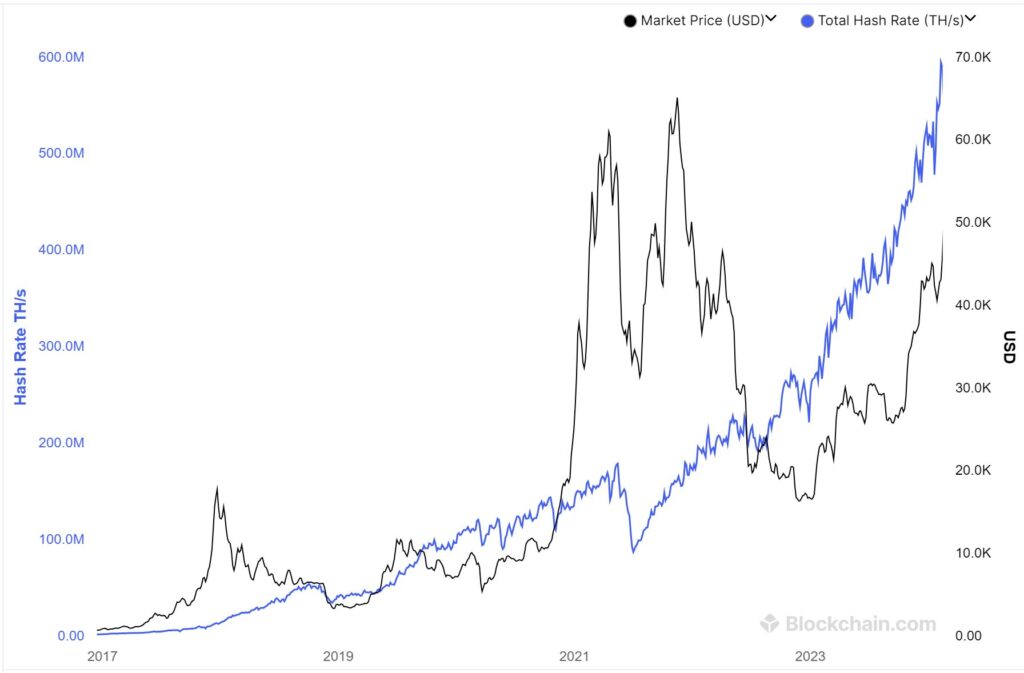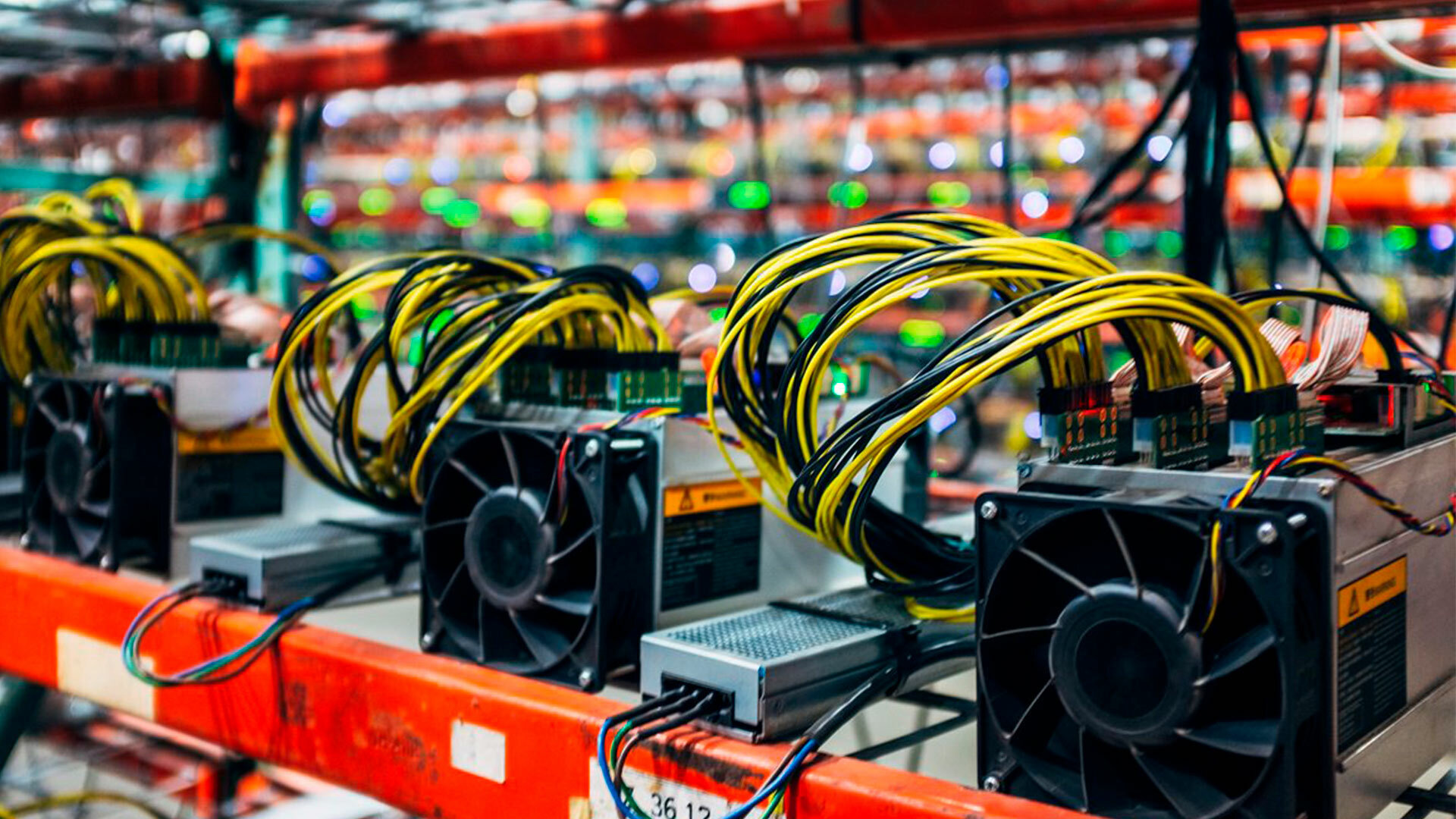It is said that during the Gold Rush, those who got rich were not the prospectors for gold, but those who sold them the picks. Mining machine manufacturers today have the role of pickaxe sellers vis-à-vis bitcoin miners. They offer increasingly efficient hardware for an ultra-competitive market estimated at several billion dollars. An arms race which has still unknown environmental consequences.
To mine bitcoin or other cryptocurrencies, you need powerful graphics cards. These machines make it possible to carry out the calculations necessary for cryptocurrency mining, a niche but rapidly developing activity. According to a study from Precedence Search, the global mining market was $1.92 billion in 2022. By 2032, it is expected to be worth nearly $7 billion.
Advertisement
Ever more powerful (and expensive) machines
There was a time when it was possible to mine dozens of bitcoins per day with an old PC. But today, it is no longer at all profitable for an individual to try bitcoin mining: they must turn to specialized equipment. Indeed, the computing power required by the network is such that mining bitcoin has never been so difficult.

Now, companies specialize in the production and sale of equipment tailor-made for this activity. These firms seem to have found the right vein, by offering a high-tech offer: the most efficient machines can be purchased for several thousand dollars, up to 8,000 euros. This market is considered promising by investors. Auradine, a manufacturer of ASICs (graphics cards specialized in mining, editor's note) has thus raised 80 million dollars early 2024.
A centralization that questions
To invest in this expensive equipment, most miners now opt for industrial “farms”. Instead of cattle, it is the power of mining machines that are exploited in hangars dedicated to the extraction of bitcoins. This activity requires a massive flow of electricity. This is why the industry is establishing itself as a priority in regions of the world where electricity is cheap.
From the creation of bitcoin, Satoshi Nakamoto seemed to have calculated everything. He designed the system taking into account this increasing sophistication of processor performance. In a mail addressed in 2010, he wrote: “As the network grows beyond a certain point, it will increasingly be handed over to professionals with server farms with specialized hardware.” To respond to this challenge and guarantee the sustainability of the network, the creator of bitcoin has therefore developed a special mechanism. Every 2 weeks, the bitcoin mining difficulty adjusts to maintain a constant production speed: approximately one block every 10 minutes. Otherwise, today's hardware would make short work of the network.
Advertisement
An industry driven by halving
Every four years, bitcoin miners must reinvent themselves. In fact, the mining reward is halved at each halving. Each time, the machines see their prices become very volatile, and specialized traders speculate on this lucrative market.
During the bear market, the price of machines fell by 80%: everyone sold their equipment, because the price of bitcoin was no longer sufficient. Alone the best prepared miners (and generally, the larger ones) survived. Buying up the equipment of their bankrupt competitors in the process. In the Bitcoin community, halving is often hailed as a process of competition beneficial to the ecosystem, since only the “best” miners remain.
Others buy all available inventory in order to create shortages, to stifle competition, or to resell their machines at a premium. In 2023, the publicly traded company Riot had thus invested $290 million to acquire 66,560 state-of-the-art machines.
A concentration which raises the question of the centralization of the Bitcoin network, supposed to be precisely… decentralized. In the same way, the 19th century saw the artisanal gold panning of far west be gradually replaced by industrial gold mines. Except that for bitcoin, the revolution took place in barely ten years.


An unnecessary waste of energy?
While bitcoin was supposed to be a simple decentralized digital currency, the project took on unexpected proportions. Mining is an increasingly important side effect, a necessary condition to power an expanding Bitcoin network.
Is such an industry really desirable? Or is it an unnecessary waste of energy given the social utility of bitcoin? Here again, Satoshi Nakamoto anticipated the growth of mining, in a post still available on the forum bitcointalk. For him, despite the pollution and the energy spent, the usefulness of bitcoin would become evident:
“ Mining gold is wasteful, but that waste is far less than the utility of having gold as a medium of exchange. I think the same will be true for bitcoin. The utility of the exchanges made possible by Bitcoin will far exceed the cost of the electricity used. Therefore, the absence of Bitcoin would be a net waste “.
However, this vision ignores the blind spots of this 2.0 extractivism, in particular the question of the production and recycling of electronic components. Because to produce these machines, you need metal mines which are very real. The complete opposite of what journalist Célia Izoard recommends, for whom “the climate movement must become anti-extractivist”in his book “ The mining rush in the 21st century ».
Even if miners claim that bitcoin would facilitate the adoption of renewable energies, the question of recycling obsolete machines remains unthought of in the industry. Many emerging countries welcome bitcoin miners, where waste treatment standards are sometimes poorly respected. Very little data exists on this subject. And that’s what’s worrying.
